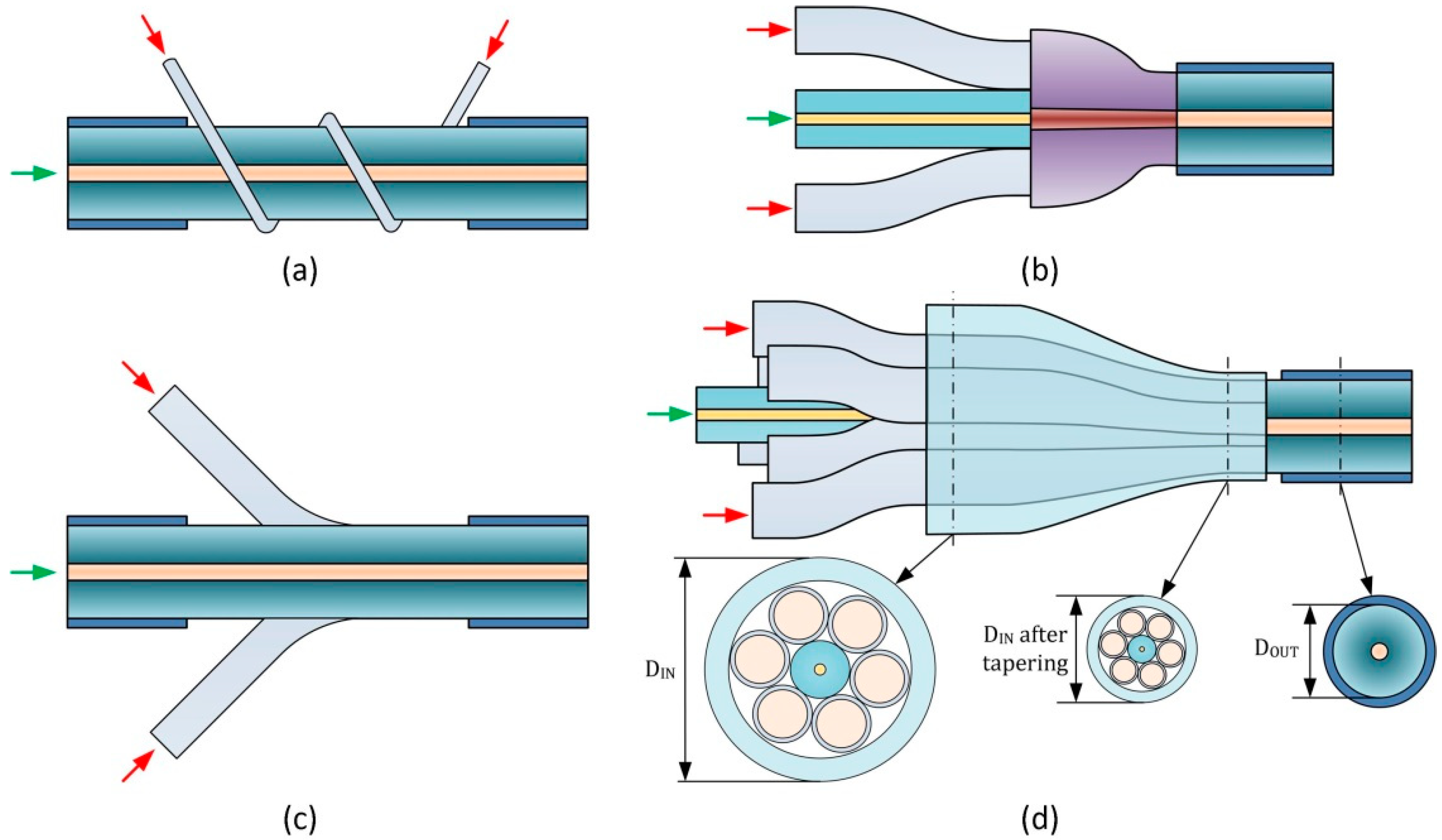Contents

Source: MDPI
Understanding Fiber Amplifiers: A Comprehensive Introduction
Fiber amplifiers have revolutionized telecommunications and industrial applications by enabling efficient data transmission and high-power light generation. This article explores the technical foundations of fiber amplifiers, their principles, and the different types of dopants used in these devices.
The Evolution of Fiber Amplifiers
In the 1980s, fiber amplifiers were developed to address the challenge of long-distance data transmission in telecommunications. The need for amplification between spans of transmission lines was crucial, and fiber amplifiers provided a direct optical amplification solution. This replaced the complex electronic detection and amplification systems previously used, facilitating a massive expansion in transmission capacity and contributing significantly to the growth of the Internet.
Today, fiber amplifiers have found new applications in industrial material processing, adapting to diverse requirements like generating higher optical powers. High-power fiber lasers often incorporate fiber amplifiers, demonstrating their versatility and importance in modern technology.
Principle of Fiber Amplifiers
Fiber amplifiers operate on the principle of using “active” fibers, which have cores doped with laser-active ions such as Erbium (Er3+), Neodymium (Nd3+), or Ytterbium (Yb3+). These ions are excited by pump light, allowing the amplification of signal light at different wavelengths through stimulated emission.
When the amplified signal becomes intense, it reduces the excitation density, causing saturation of amplification. Fiber amplifiers often work in a saturated regime to achieve high output power, with output power reaching up to 80% of the pump power. However, spontaneous emission can occur, leading to amplified spontaneous emission (ASE), which can limit the gain in high-gain scenarios.
Double-clad Fibers
A significant advancement in fiber amplifiers is the development of double-clad fibers. These fibers allow for efficient coupling of pump light into a pump cladding surrounding the core, instead of directly into the core. This design enables the use of high-power pump diodes with poor beam quality, as the pump light is guided by the outer cladding and absorbed in the doped core.
Types of Dopants in Fiber Amplifiers
Erbium-Doped Fiber Amplifiers (EDFA)
Erbium-doped fiber amplifiers are widely used in telecommunications, operating around 1550 nm, where telecom fibers exhibit low absorption and scattering losses. These amplifiers are eye-safe, as the light is absorbed in the eye’s lens, preventing it from reaching the retina. However, EDFAs are not ideal for achieving the highest power and efficiency levels.
Neodymium-Doped Fiber Amplifiers
Initially developed for the 1-μm spectral region, neodymium-doped fiber amplifiers share similarities with Nd:YAG laser crystals but offer broader wavelength ranges for pump and signal light. This allows the amplification of ultrashort pulses and ensures high beam quality due to waveguiding properties, despite the small mode area.
Ytterbium-Doped Fiber Amplifiers
Ytterbium-doped fiber amplifiers have gained popularity in the 1-μm spectral region, providing higher efficiency and power potential. They offer a large amplification bandwidth but require a deep understanding of their quasi-three-level behavior to fully realize their performance potential.
Thulium-Doped Fiber Amplifiers
Thulium-doped fibers are used for longer wavelengths, such as 1.9 to 2 μm. Despite a significant quantum defect due to a shorter pump wavelength, these fibers can be surprisingly efficient due to a special energy transfer process, which allows two ions in the upper laser level per pump photon.
Conclusion
Fiber amplifiers are a cornerstone of modern telecommunications and industrial applications. Their ability to efficiently amplify light across various wavelengths makes them indispensable in numerous fields. As technology continues to evolve, fiber amplifiers will likely play an even more critical role in future innovations.

Source: MDPI
Feel free to comment your thoughts.



